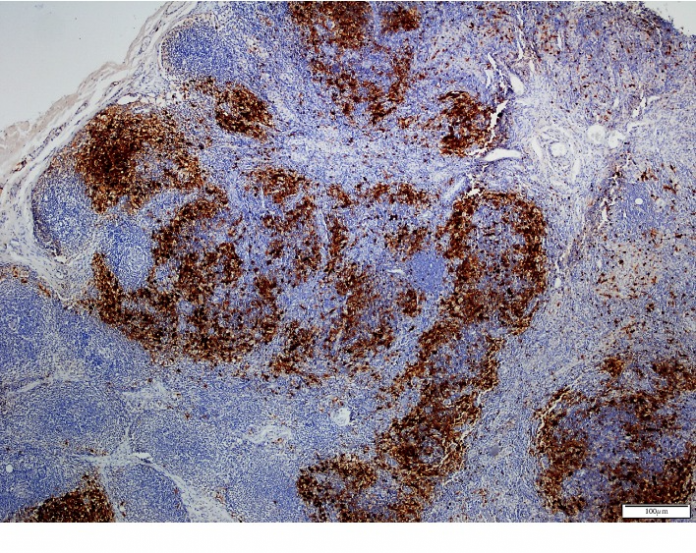Case of Rosai–Dorfman disease in 18-year-old white, male patient.
An 18-year-old, white, male patient presented with complaints of bilateral neck pain, axillary and inguinal lumps with a 6-month history. The patient was also experiencing fatigue and had lost 15 kilograms. This case describes a long-lasting follow-up of a patient with Rosai–Dorfman disease on low-dose steroid.
Physical examination
He had no other symptoms such as change in appetite, diarrhoea, vomiting, nausea, rashes, night sweats or fever. He had been boxing for 5 years. His past medical and family history were both unremarkable. Physical examination showed multiple enlarged lymph nodes present bilaterally. The lymph nodes were palpable in the cervical, axillary and inguinal regions. In addition, an enlarged spleen was palpable on deep expiration in the left costal margin. Ultrasonography showed that the spleen measure 130 mm. The lymph nodes were soft and painless. Similarly, the proportions were massive. There was no notable drain. The skin overlying the lymph nodes was normal.
All other lab work was within normal range. In addition, Serological markers for TORCH (Toxoplasmosis (T), Rubella (R), Cytomegalovirus (C), Herpes Simplex viruses (H), and Others (O)) were also negative.
CT scan showed showed bilateral cervical lymph node enlargement in the neck and cranium. There were no significant findings on the CT scan of the thorax. There were no signs of abdominal lymphadenopathy or ascites. Histopathological analysis of the cervical lymph node revealed CD 68 [+] large histocytes within the sinusoids of the lymph nodes and S-100 positivity.
Rosai-Dorfman disease
Rosai-Dorfman disease is a benign pathology of sinus histiocytosis with an unknown cause. A common clinical manifestation of the disease is lymphadenopathy. However, diverse organs can also be affected.
Treatment plan
Considering the diagnosis and clinical condition of the patient. He was on oral prednisolone 1 mg/kg/day. The steroid dose was reduced to 0.5 mg/kg/day in the first month. Doctors continued to maintain the dose for 3 months. It was gradually reduced to 0.1 mg/kg/day. The patient was symptom-free after 33 months of follow-up. His spleen returned to normal size. However, the cervical, axillary and inguinal lymph nodes were still palpable with slight reduction in size. He was on 4 mg low-dose oral prednisolone daily by the 38th month. In addition, there was no recurrence of symptoms.
References
Long-Lasting Follow-Up with Low-Dose Steroid in an 18-Year-Old Male with Rosai–Dorfman Disease https://www.ncbi.nlm.nih.gov/pmc/articles/PMC7063216/




